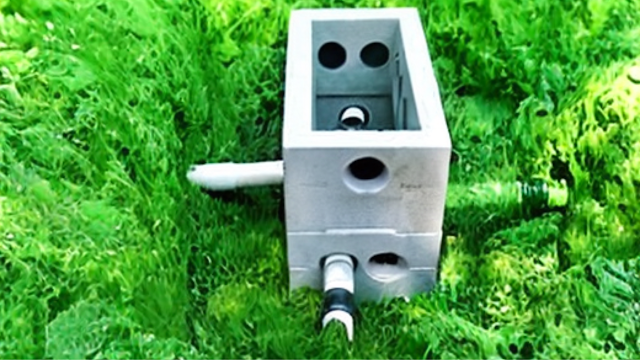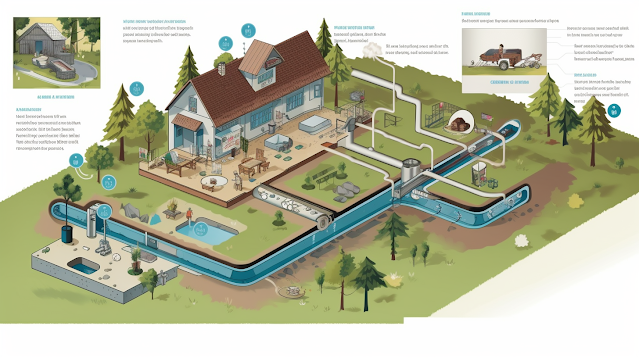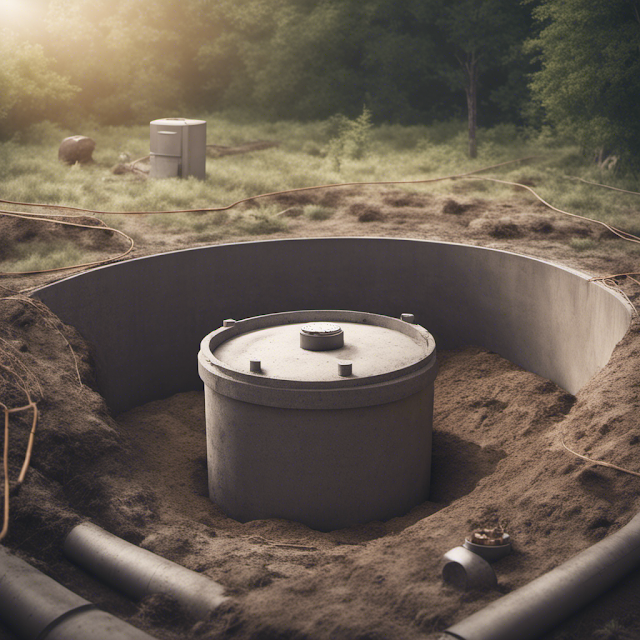Old Style Septic Tank
Are you considering an upgrade from your old style septic tank? In this article, we will explore the history, functionality, pros and cons, common issues, and maintenance tips for old style septic tanks.
Whether you are curious about their workings or facing problems with your current system, we've got you covered.
Stay tuned to learn everything you need to know about old style septic tanks and make an informed decision about upgrading.
History of Old Style Septic Tanks
As you may already know, the history of old style septic tanks is quite fascinating. The evolution of septic tanks can be traced back to ancient times when civilizations relied on cesspools for waste disposal. However, it wasn't until the late 19th century that septic tanks as we know them today began to emerge.
These early septic tanks were simple in design, consisting of a concrete or steel tank that collected and stored waste. Over time, improvements were made to enhance their efficiency and performance, such as the addition of baffles and filters to prevent solids from entering the drain field.
Despite their effectiveness in treating wastewater, old style septic tanks had a significant environmental impact. They released harmful pollutants into the soil and groundwater, leading to contamination and health risks. This prompted the development of newer, more environmentally friendly septic systems.
How Old Style Septic Tanks Work
To understand how old style septic tanks work, it's important to examine their design and function.
These tanks are typically made of concrete or other durable materials and are buried underground.
They function by allowing the waste to separate into layers, with solid waste settling at the bottom and liquid waste floating on top.
Over time, bacteria and other microorganisms break down the organic matter, converting it into simpler substances.
Tank Design and Function
When maintaining an old style septic tank, it's important to understand its design and function. These tanks are typically constructed using concrete or steel materials and consist of two main chambers.
The first chamber receives wastewater from the house, allowing solid waste to settle to the bottom and oils and grease to float to the top.
The liquid portion then flows into the second chamber, where further settling occurs. This two-chamber design helps to separate and trap solids, preventing them from entering the drain field.
While old style septic tanks have been effective for many years, there are now septic system alternatives available that offer more advanced treatment options. Understanding the tank's design and function is crucial for proper maintenance and to ensure the efficient waste decomposition process.
Waste Decomposition Process
To understand how the waste decomposition process works in old style septic tanks, you need to know that it relies on the natural breakdown of organic matter by bacteria.
When wastewater enters the septic tank, it separates into three layers: scum, liquid effluent, and sludge. The scum floats on top, while the sludge settles at the bottom. The liquid effluent is in the middle and flows out of the tank into the drain field.
Inside the tank, bacteria break down the organic matter in the scum and sludge through a process called anaerobic digestion. This process converts the waste into simpler compounds like water, carbon dioxide, and methane.
The remaining solids are further decomposed by bacteria in the drain field.
Proper waste management in old style septic tanks is crucial to prevent environmental impact such as groundwater contamination and the spread of diseases.
Pros and Cons of Old Style Septic Tanks
When considering the pros and cons of old style septic tanks, it's important to take into account their maintenance requirements.
Old style septic tanks often require more frequent pumping and cleaning compared to newer systems. This can be a disadvantage for homeowners who prefer a low-maintenance option.
However, one advantage of old style septic tanks is their efficiency in treating wastewater, as they rely on natural processes to break down and treat the waste.
Maintenance Requirements for Old Style Septic Tanks
For proper maintenance of your old style septic tank, you should be aware of the pros and cons associated with its use.
Septic tank maintenance is crucial to ensure its efficient functioning and avoid costly repairs. Regular pumping of the tank is necessary to remove accumulated solids and prevent clogging.
In addition, inspecting the tank for leaks, cracks, or damaged components is essential to prevent groundwater contamination. Septic tank troubleshooting involves identifying and resolving common issues such as slow draining, foul odors, or backups.
It's also important to be cautious of what you flush down the drain to avoid damaging the system. While old style septic tanks may require more frequent maintenance compared to newer systems, they can still provide effective wastewater treatment when properly cared for.
Now, let's explore the efficiency of old style septic tanks.
Efficiency of Old Style Septic Tanks
But, before we dive into the efficiency of old style septic tanks, let's explore the pros and cons associated with their use.
Old style septic tanks have been used for many years and have some advantages. They're generally less expensive to install and maintain compared to newer systems. However, in terms of efficiency comparison, old style septic tanks have some drawbacks. They've a limited capacity and may require more frequent pumping. Additionally, they may not effectively remove all the contaminants from the effluent, leading to potential environmental impact.
It's important to consider these factors when evaluating the efficiency of old style septic tanks.
With these pros and cons in mind, let's now move on to discuss the common issues with old style septic tanks.
Common Issues With Old Style Septic Tanks
If you neglect regular maintenance, problems can arise with your old style septic tank. One common issue is the inadequate installation of the septic tank. If the tank isn't properly installed, it can lead to leaks and seepage of wastewater into the surrounding soil, causing contamination and potential health hazards.
Another issue is the lack of regular septic tank pumping. Over time, solid waste accumulates in the tank, reducing its capacity to hold wastewater effectively. This can result in backups, clogs, and foul odors. Regular pumping is essential to remove the accumulated sludge and maintain the proper functioning of the septic system.
Neglecting these maintenance tasks can lead to costly repairs and potential damage to the environment. It's crucial to schedule regular maintenance and inspections to address these common issues and ensure the longevity of your old style septic tank.
Maintenance Tips for Old Style Septic Tanks
To properly maintain your old style septic tank, you should regularly schedule inspections and implement these maintenance tips.
First and foremost, it's crucial to have your septic tank cleaned regularly by a professional. Over time, solid waste and sludge can accumulate in the tank, leading to clogs and potential system failure. Cleaning ensures the removal of these build-ups, preventing any blockages and maintaining proper functioning.
Additionally, consider using septic tank additives. These products contain beneficial bacteria that help break down waste and keep your tank operating efficiently. They can also aid in preventing odors and reducing the need for frequent pumping. However, it's important to choose additives that are specifically designed for old style septic tanks to ensure compatibility and effectiveness.
Upgrading From an Old Style Septic Tank
If you're considering upgrading from an old style septic tank, there are a few important factors to keep in mind.
The upgrading process involves several steps to ensure a successful transition. First, you need to assess the condition of your current septic tank and determine if it's suitable for an upgrade.
Next, consult with a professional to evaluate the feasibility of upgrading and to determine the appropriate system for your needs. A cost analysis is crucial to understand the financial implications of the upgrade, including the cost of the new system, installation, and any necessary permits.
It's also important to consider the long-term maintenance and operational costs.
Frequently Asked Questions
Are Old Style Septic Tanks Still in Use Today?
Yes, old style septic tanks are still in use today, but there are upgrading options available. It's important to consider their environmental impact. Upgrading to more modern systems can help minimize pollution and protect groundwater.
Can Old Style Septic Tanks Be Converted to More Modern Systems?
Yes, you can convert old septic tanks to more modern systems. Converting offers several benefits such as improved efficiency, reduced maintenance, and better wastewater treatment. It's a worthwhile investment for long-term sustainability.
How Often Should Old Style Septic Tanks Be Pumped?
To ensure proper function, it is recommended that you pump your old style septic tank every 3-5 years. Signs of tank overload include slow drains, foul odors, and sewage backups. Regular pumping helps prevent costly repairs.
Are There Any Health Risks Associated With Old Style Septic Tanks?
There are health risks associated with old style septic tanks. It is important to be aware of these risks and take necessary precautions to prevent any potential harm to your health.
Are There Any Regulations or Permits Required for Installing or Maintaining Old Style Septic Tanks?
To install or maintain old style septic tanks, you must adhere to specific regulations and obtain permits. These requirements ensure proper installation, maintenance, and protection of the environment and public health.




.png)






Comments
Post a Comment